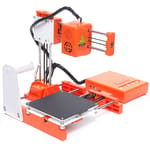Amid the battleground that is budget 3D printing, it’s easy to forget that even the likes of the Creality Ender 3 (a perennially cheap and recommended 3D printer) isn’t the cheapest. Far from it.
Yes, beneath even the budgetous Ender 3 there’s a whole sub-class of printer, one characterized by colorful plastic shells and laughably basic features. Typically just under the $100 mark, you may have even seen one while browsing the 3D printing pages of Amazon or AliExpress. It’s a class of printer best exemplified by the products of Easythreed, one of the few companies committed to making sub-$100 3D printers. They’re absurdly inexpensive, can supposedly 3D print, and are largely ignored by most of us while we look at the bigger, better printers.
We certainly haven’t paid them much attention when sizing up possible printers for our buyer’s guides, passing them by for their lack of features essential for the varied 3D printing a hobbyist typically does. But it’s 2022. Things are happening in the world, and perhaps we should challenge this snobbishness and give the cheapest 3D printer a fair shot.
So, after a quiet afternoon browsing the web for the cheapest 3D printer that’s both cheap (and stably so) and widely available, we settled on the Easythreed X1, a cheerful mini 3D printer primarily aimed at kids.
Our goal? To see what the cheapest 3D printer is actually like to use and how it stacks up against our recommended budget printers.
It’s So Small
First things first, the Easythreed X1 is small. That’s not surprising for a 3D printer that costs less than $100.
Its build volume is a pipsqueakish 100 x 100 x 100 mm, and the printer itself is not much bigger at 210 x 210 x 250 mm (not counting the slim control box, which is umbilically attached and sits off to the side). For comparison’s sake, your typical Ender 3 style printer has a size in the region of 400 x 400 x 500 mm.
The X1’s smallness is thrust on you when it gets delivered – the box it ships in is tiny. Barely larger than a spool of filament.
To Easythreed’s credit, the presentation of the X1 is better than we’ve seen from printers many times its price. The X1 comes with a legible if a little small (yes, even the instructions are tiny) manual that walks you through the simple build process.
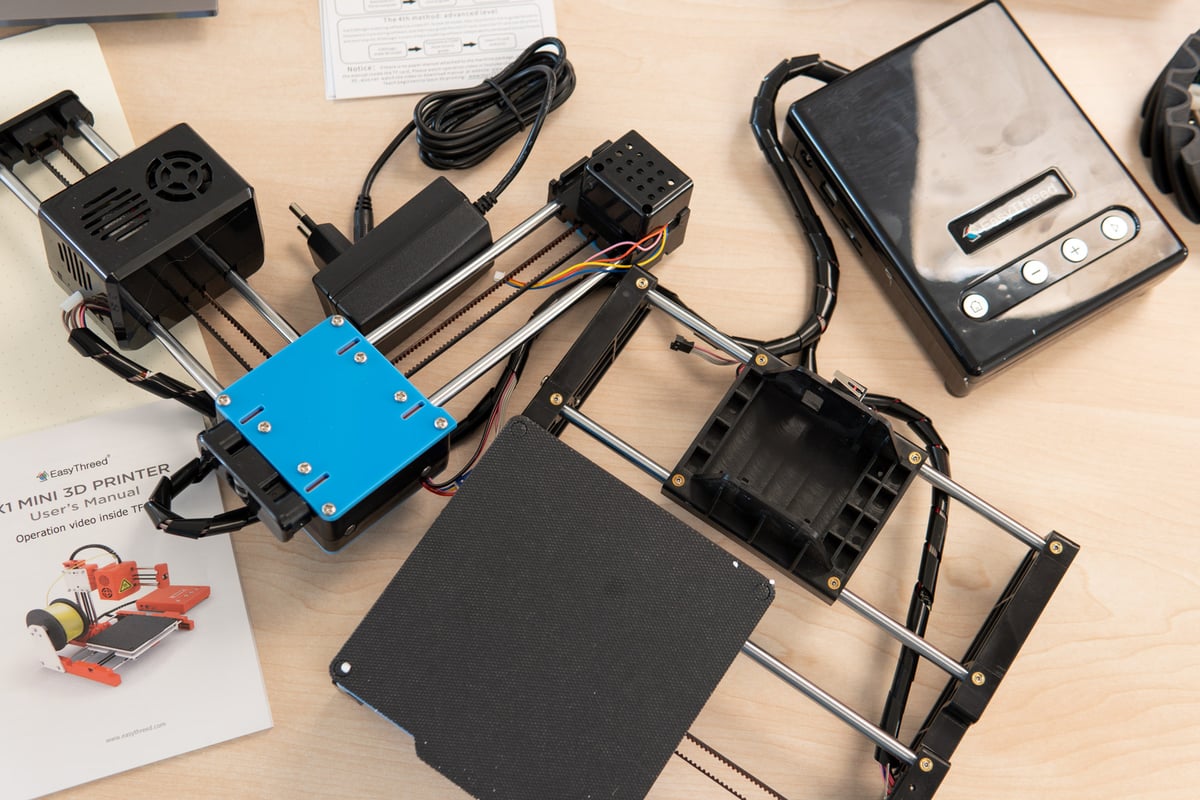
It is virtually ready-to-run, with all of the main assemblies already built for you. All building requires of you is to slot together the cantilever style X- and Z- axes, screw them in place, and attach the spool holder. Fiddle-free and quick.
Delicate, Dinky Printing
With the internet’s cheapest 3D printer assembled before us and ready to run, it’s here that we can start to see why it’s so cheap. It feels incredibly fragile.
Stepper motor cables are of a tiny gauge, and during one stage of the assembly, we trapped one, digging into the insulation and noticeably weakening it. Such cases may be why EasyThreed includes two spare stepper motors, with cables, in the box.
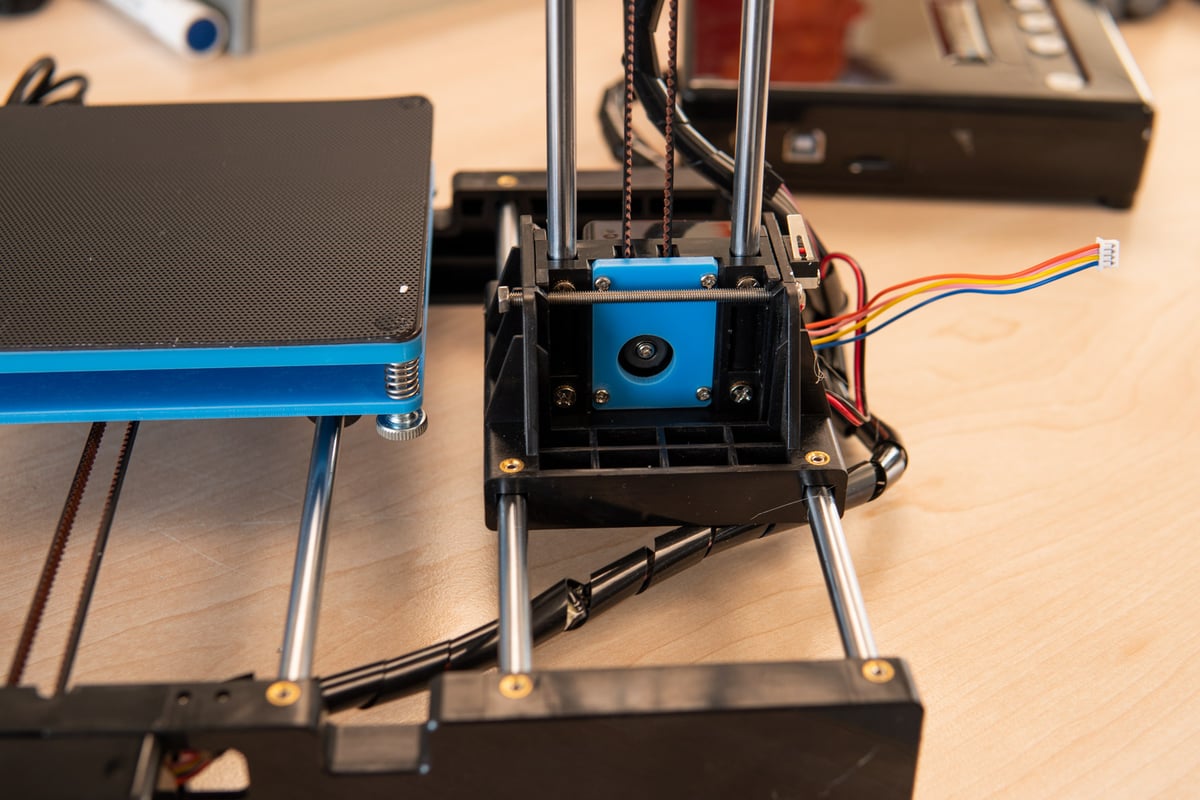
Sitting flush on the desk, the whole thing wobbles, too. This is remedied somewhat by four tabs of sticky-back foam; provided.
Everything here is a scale of magnitude smaller than found on pricier budget 3D printers. It’s clear why the X1 is advertised as a 3D printer for kids – it feels very much like a preassembled Arduino kit, small parts cobbled together for demonstration, rather than a productive 3D printing tool.
You get small high-torque stepper motors driving slim Gates belts to move the printer’s motion in all axes (including the Z-axis) with linear bearings on steel rods. It’s a lightweight printer – barely more than a quart of milk – which lends a lot to the X1’s portability. On the other hand, the control box is separate from the main frame and tricky to position, making the X1 a pretty clumsy looking system that sprawls out across the benchtop.
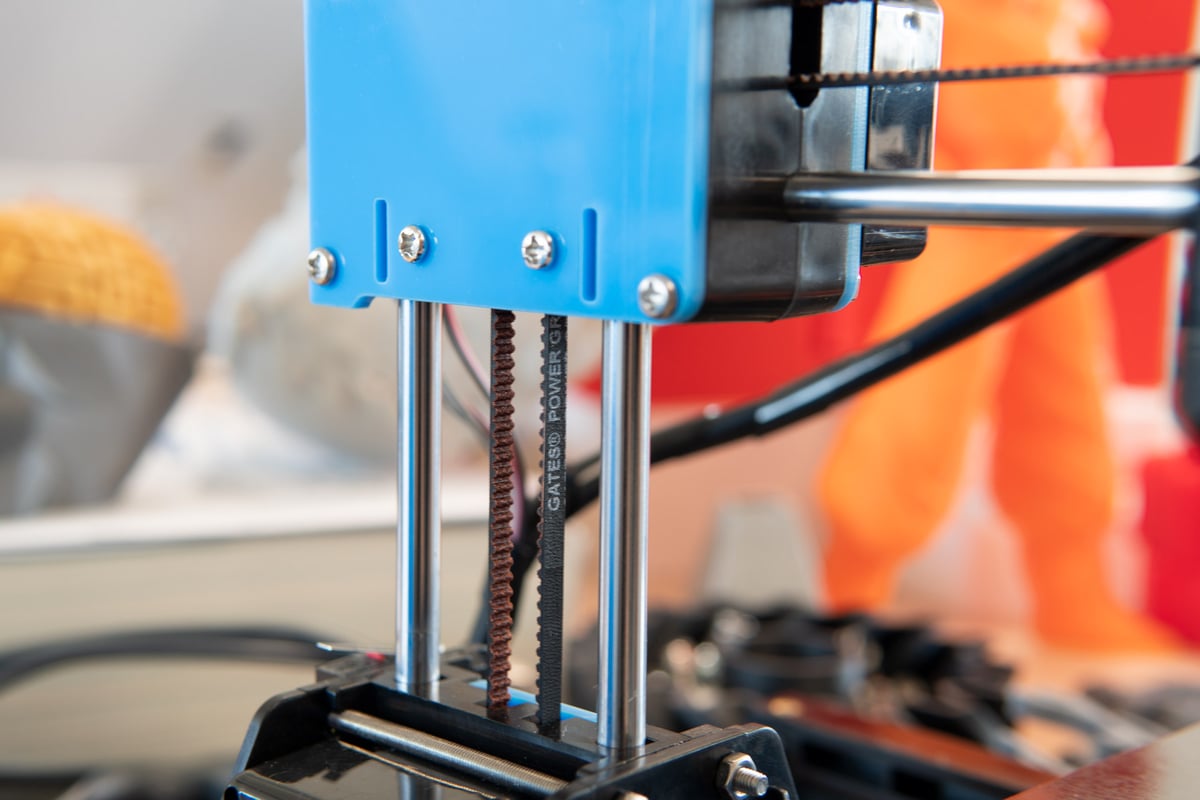
Not So Hot Bed
In almost every regard, the X1 is a beginner’s 3D printer. The experience is pared back, basic, and approachable. There’s no heated bed, though the mainboard inside can accommodate one. The hot end is capped to 230 ℃, so you’re limited to PLA. The path through the extruder and hot end isn’t tight, so flexible filaments are unlikely to work.
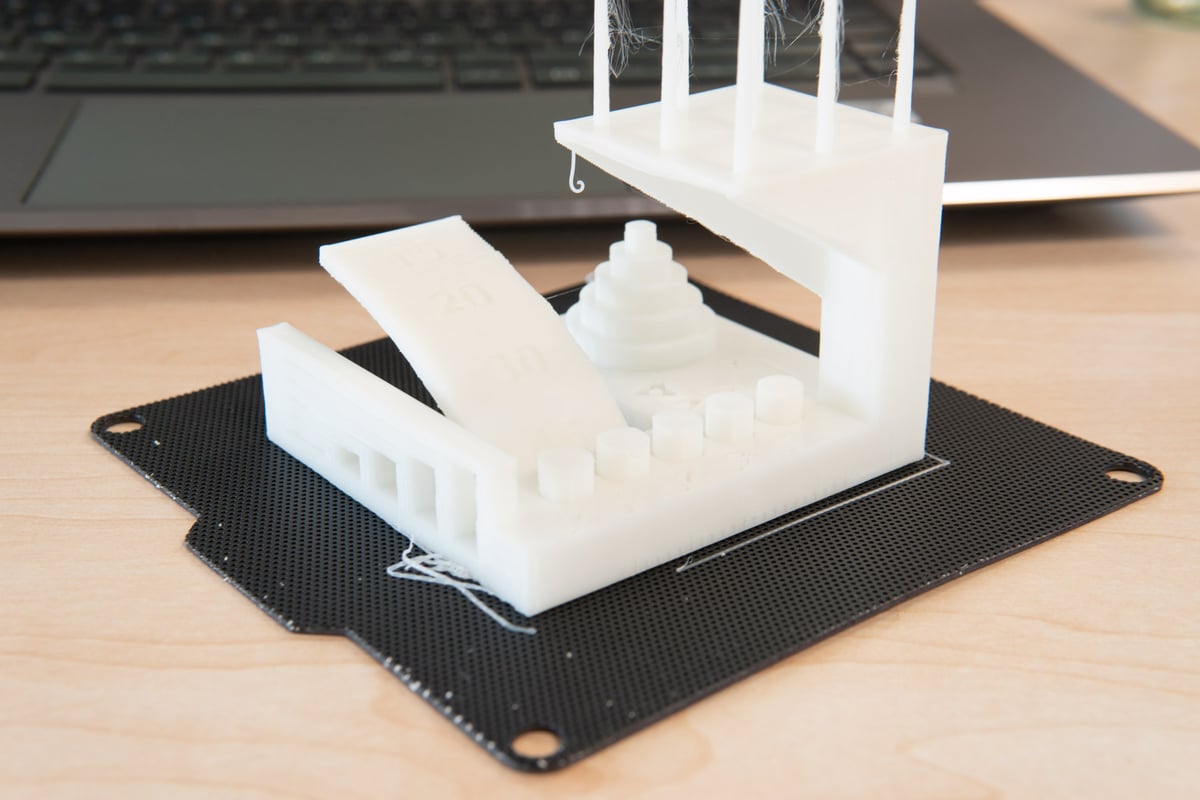
For the act of simply toying around with 3D printing and rattling off a few trinkets or small, functional PLA prints, the X1 is adequate. The process of slicing and getting a surprisingly decent print off its flexible magnetic bed is effortless, just don’t expect dazzling results. Dimensional accuracy and the X1 are not good bedfellows, and only the simplest of prints, when printed slowly, have a pleasant finish to them.
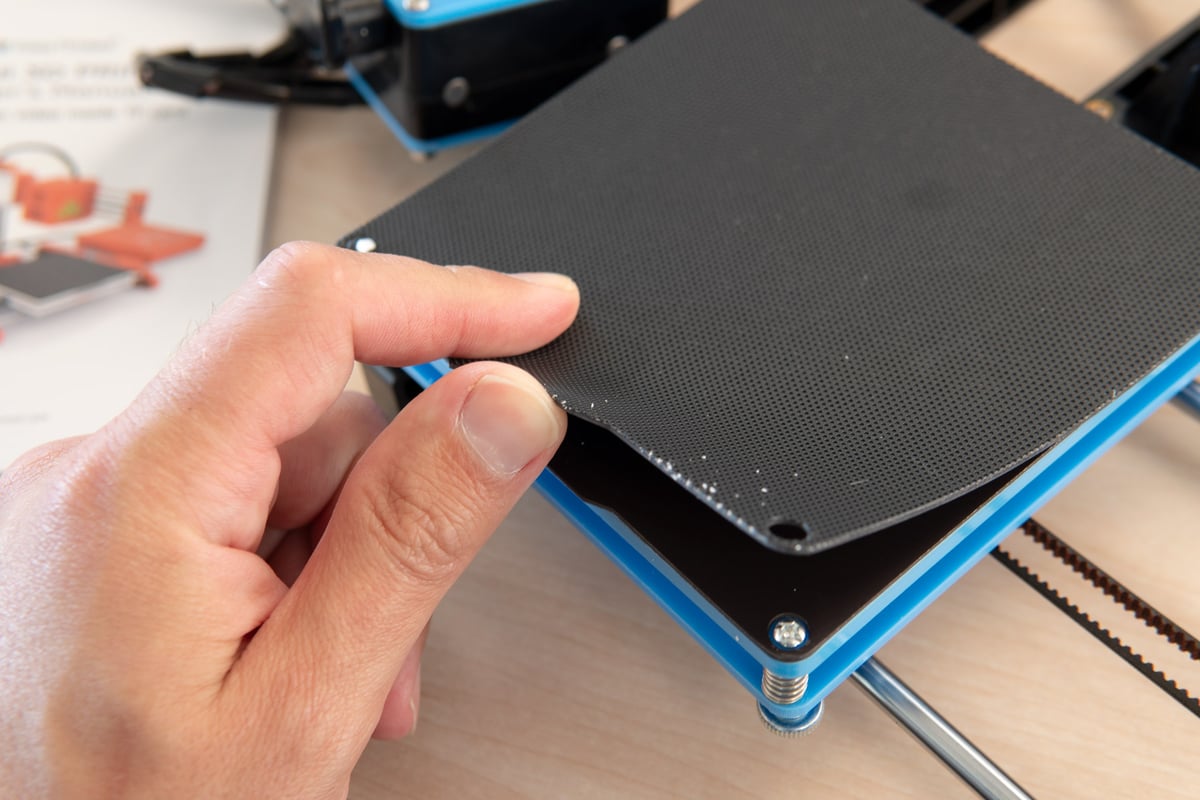
Extrusion seems strong and stable – any issues we’ve seen with prints we’ve completed on the X1 appears to stem from motion.
The slicer, EasyWare, comes on a microSD card or can be downloaded online. It’s quirky. We’ll start with the good.
EasyWare slices well, chewing models into machine-readable G-code in no time (using the Cura slicing engine). There are even three levels of one-click printing that simplify the software side of things to the press of a magical button. Each differs in layer height and speed – standard fare in the great balance of printer slicer settings.
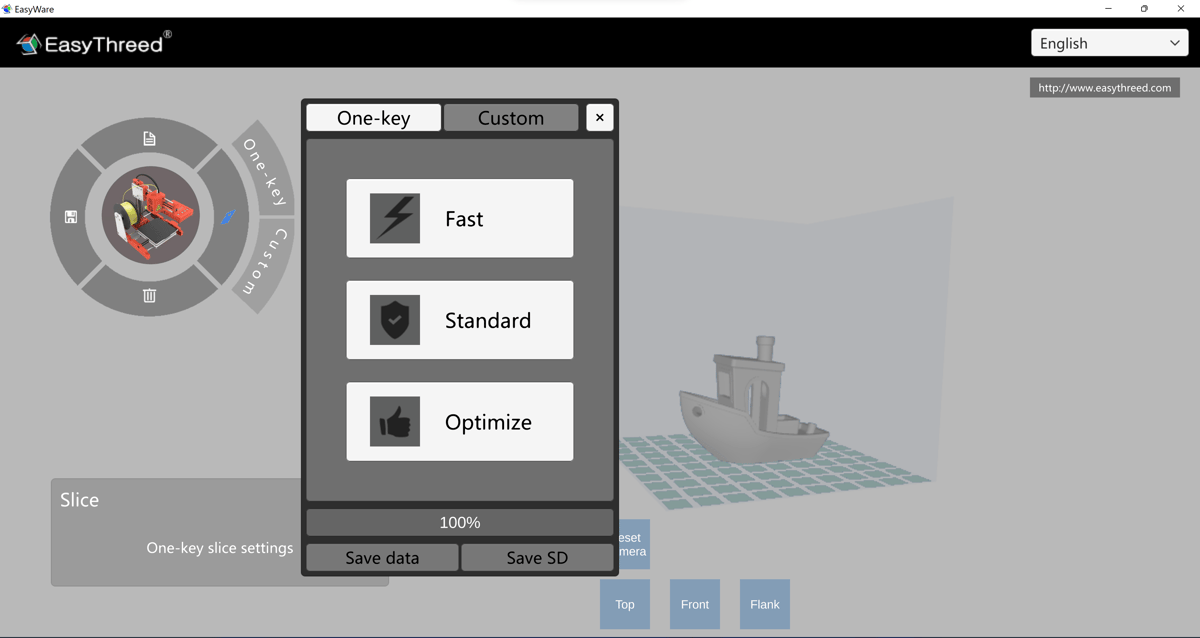
Crack open the advanced printing settings, and you have a lot greater control of the particulars of your print, just as you do in any of today’s popular free slicers.
Besides this core functionality of slicing, EasyWare is a mess. Bugs galore, typos, and conflicting functions will eventually frustrate users doing anything more than one-click printing. If you’d really rather not use it, ditch it entirely and use Cura instead.
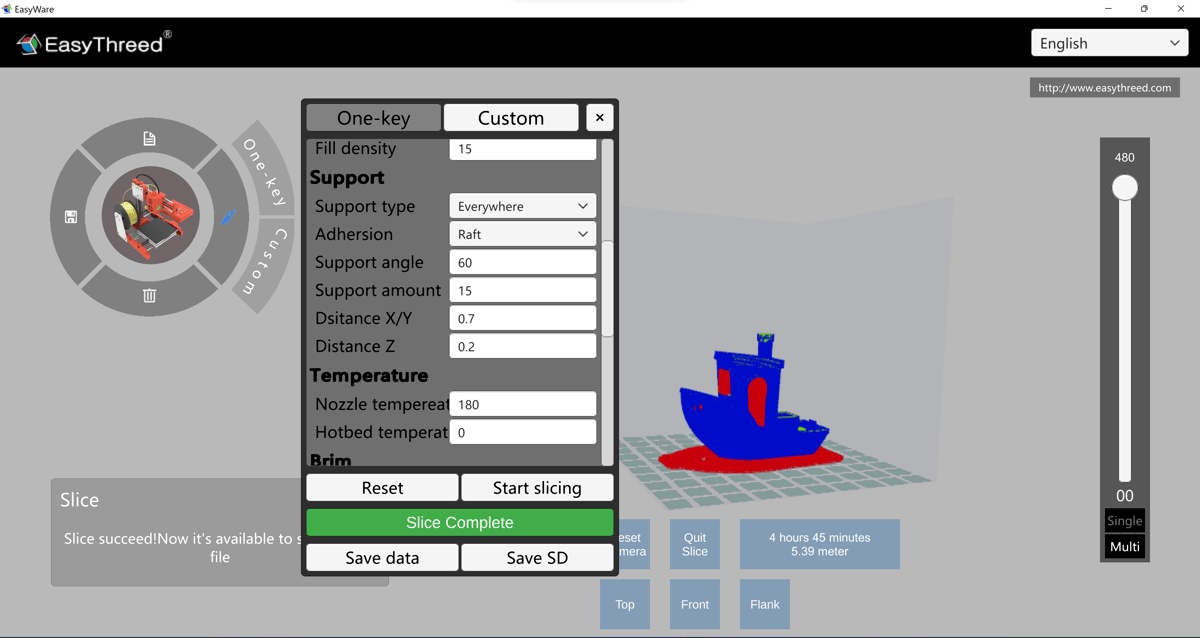
The Prints and the Pauper
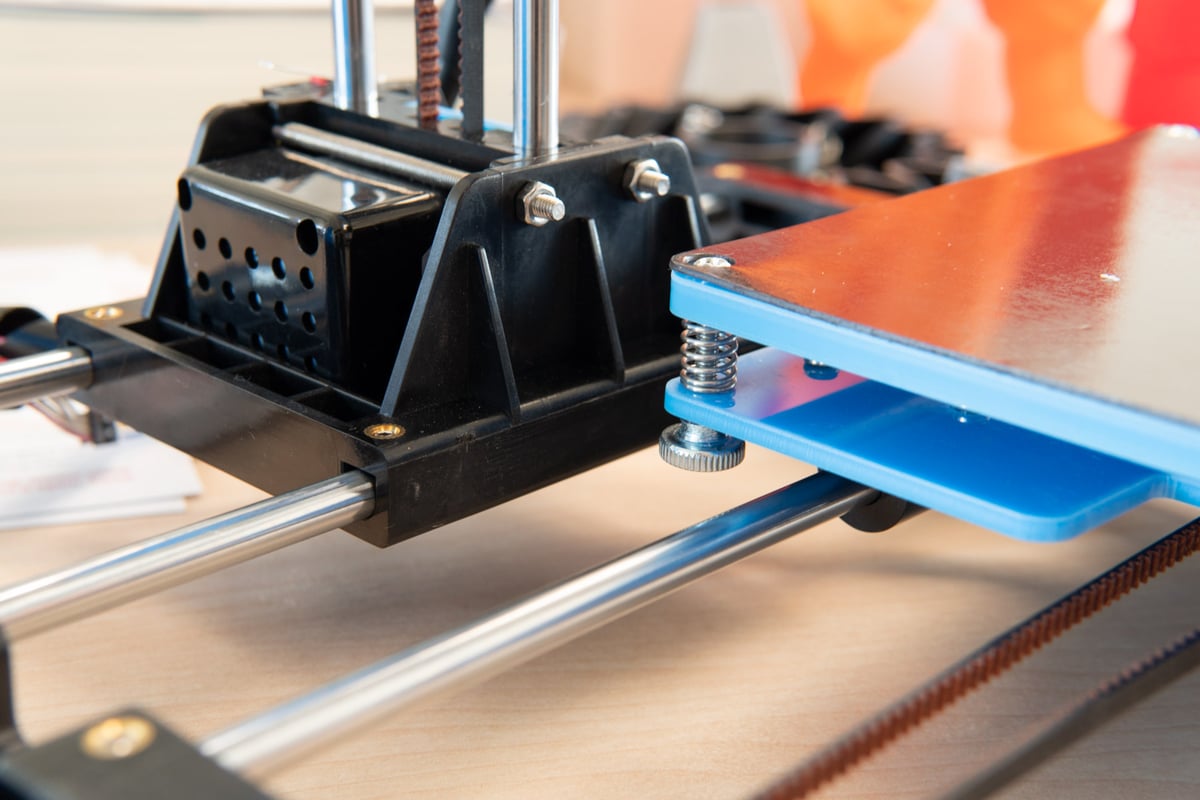
Using the EasyThreed X1 is a mixed bag. There are constant reminders that it’s a ~$100 3D printer; every contortion of your fingers when twisting the four tiny bed-leveling thumbscrews, and with every explosive tangle of sample filament due to the printer’s inability to hold anything but the smallest of spools.
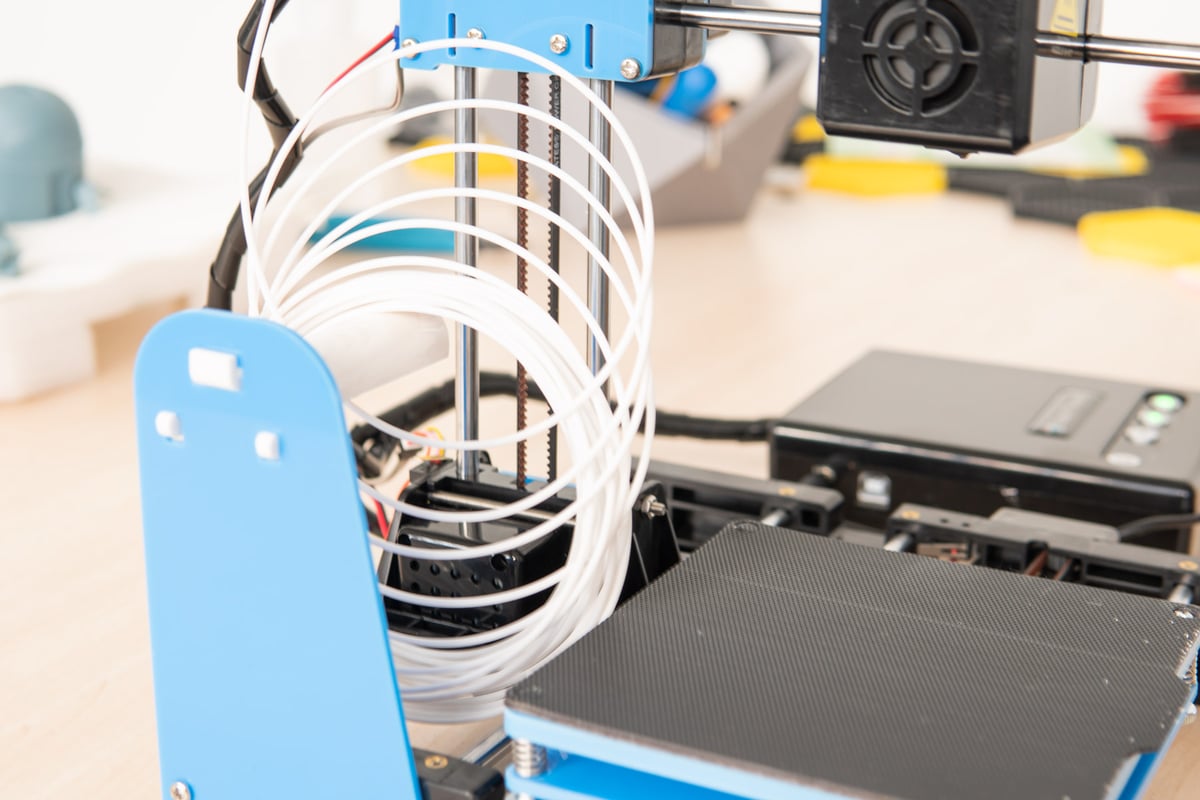
The conspicuous lack of a display on the X1 is probably the most obvious sign that this is the cheapest 3D printer. Besides the cheerful plastic almost everywhere you look, of course.

This lack of a display could’ve been a problem were it not for the printer being so utterly fool-proof. The X1’s control box features four buttons corresponding to four actions or functions. The “house” icon will send the print head and bed to their origins, bumping their endstops and parking.
Then there are “plus” and “minus” buttons corresponding to filament load and unload. Hit either once, and the hot end will heat up, followed by the extruder feeding or withdrawing the filament.
Hit Play
Finally, there’s a “play” button, which does just that; it loads up the most recently sliced model on the microSD and “plays” (prints) it. Further presses will pause and unpause the print, and a long press will cancel the job outright.
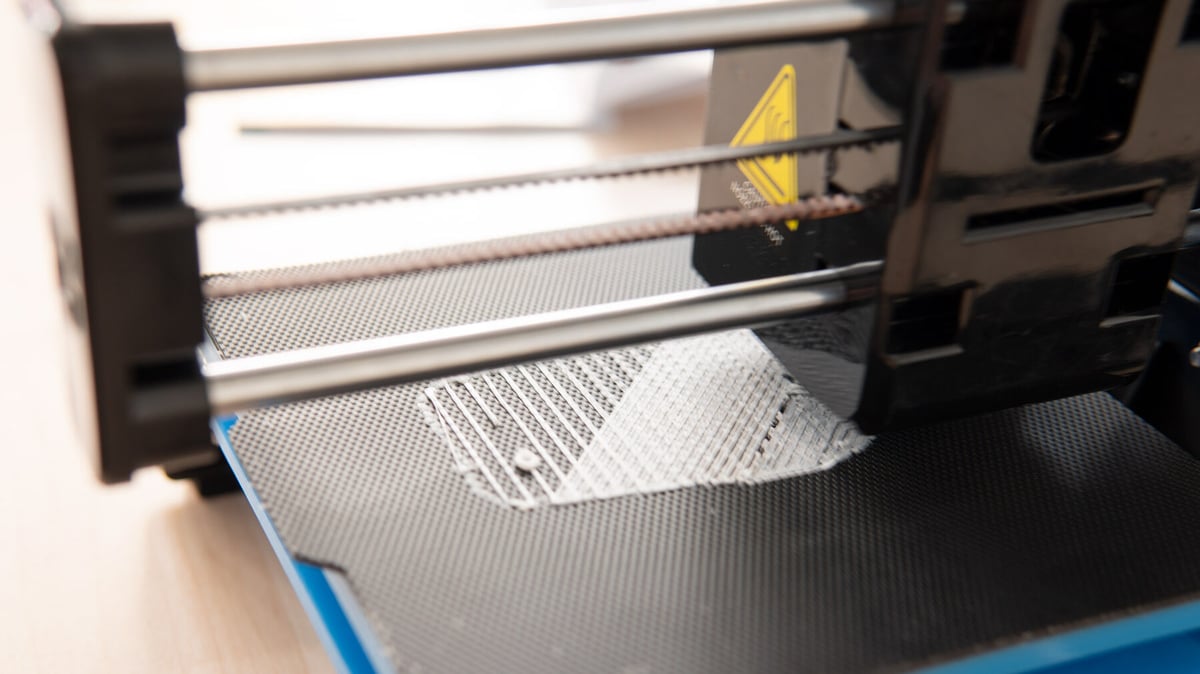
Such “headless” printing may seem a little daunting, but in practice, it works well enough on the X1. You are missing information on the state of the printer, including important things like the hot end temperature and time remaining. Still, over a few days of printing, we never found ourselves second-guessing what the printer was doing.
Between the one-click slicing in EasyWare and the “play” button on the machine, you can prepare and print a model in just two button presses – something most printers can’t do.
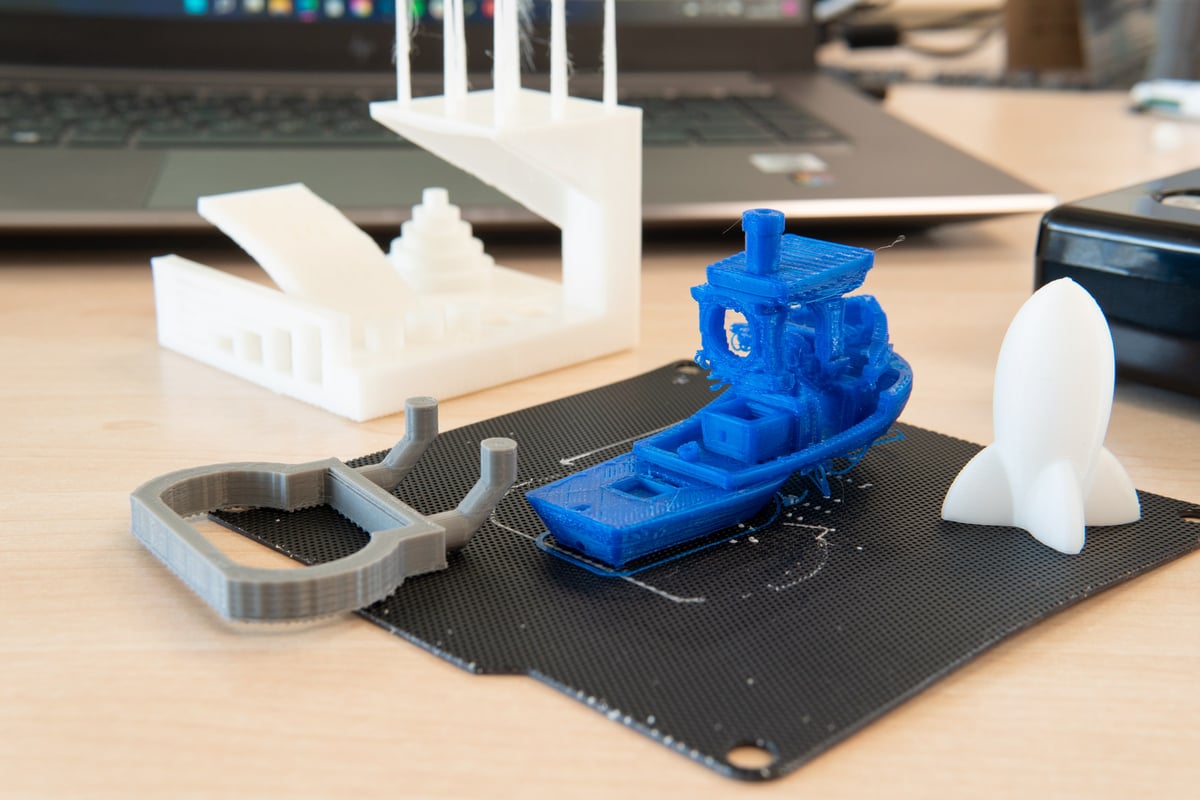
The Easythreed X1 is a little like an ogre, which is to say, a little bit like an onion. It has layers. Between the buggy slicer, lack of features, and fragility, there is a functional 3D printing experience and the occasional layer of refinement that has taken us by surprise. It’s easy to set up and easy to use. The prints may not be the prettiest, but it does print. The embodiment of cheap and cheerful.
Unfortunately for the cheapest 3D printer, not a lot more money can get you a lot more printer. For all its charm (if you even are charmed by quaint, plasticky electronics), the X1 pales in comparison to many manufacturers’ base model 3D printers. The Voxelab Aquila (our current under-$200 pick) costs $159, less than $60 more than the X1’s ~$100, offers approximately eight times the build volume, silent printing, and a heated bed for wider material compatibility. Plus a display, of course.
It’s a stark difference and easy to find multiple examples of. While the X1 has been a fun little departure from the typical 3D printing we do – it is undoubtedly far better than the mess we unfairly thought it would be. Ultimately we see no reason to check one out for anything other than curiosity.
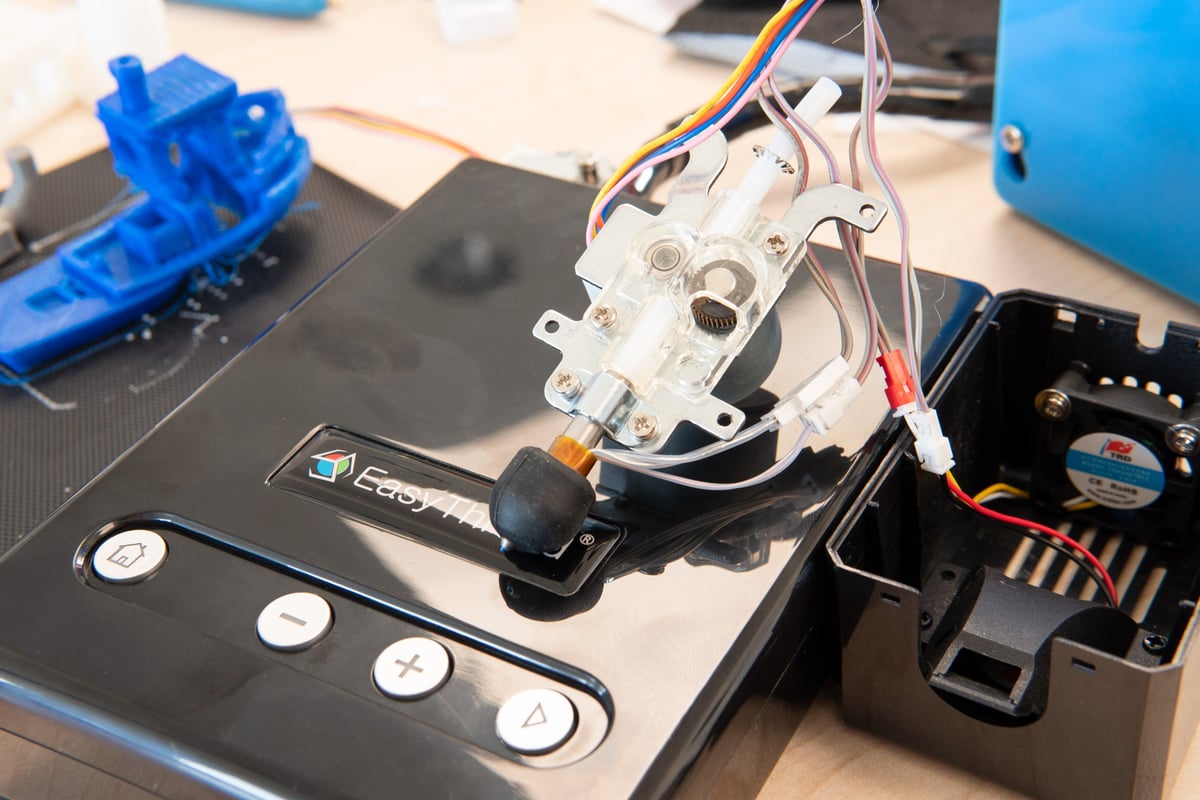
Between the fear of breaking it, the pokey build volume, and the insane value other cheap 3D printers offer, by comparison, we can conclude that printing with the cheapest 3D printer is certainly possible, but we wouldn’t recommend it. You could make a case for it as a fun distraction, but if you’re planning to learn the ropes of 3D printing or introduce kids to the technology, there are better-suited 3D printers for beginners.
License: The text of "What’s the Cheapest 3D Printer Actually Like to Use?" by All3DP is licensed under a Creative Commons Attribution 4.0 International License.
CERTAIN CONTENT THAT APPEARS ON THIS SITE COMES FROM AMAZON. THIS CONTENT IS PROVIDED ‘AS IS’ AND IS SUBJECT TO CHANGE OR REMOVAL AT ANY TIME.
